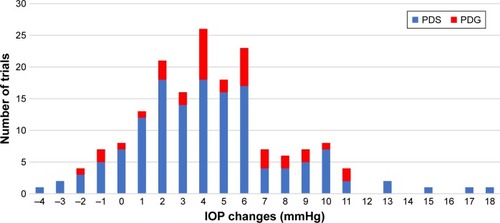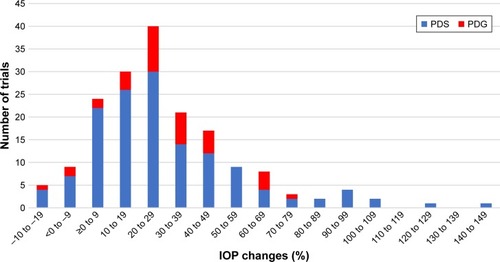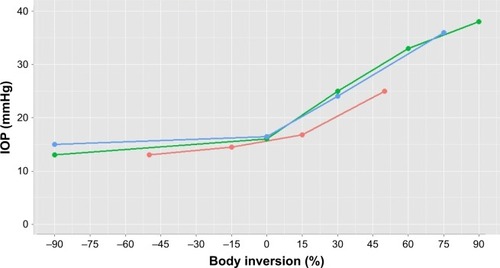Figures & data
Table 1 Probability values (N=176)
Table 2 High responders vs low responders average cohort values and P-values
Table 3 Changes in clinical variables
Figure 1 IOP changes (mmHg) from sitting to recumbent positions in this study (N=176 trials).

Figure 2 IOP changes (%) from sitting to recumbent positions in this study (N=176 trials).

Figure 3 Average IOP values in head up (negative) and down (positive) positions in 3 prior studies.
Abbreviation: IOP, intraocular pressure.

